When you are deer hunting, knowing what deer hear, see, and smell helps you avoid detection. Beating a deer’s senses is crucial while still hunting or cutting distance on a trophy buck.
A deer’s sense of smell, hearing, and vision helps it avoid predators. These senses are powerful, but they all have the same weakness; they depend solely on the deer’s current state of vigilance. And no man or animal can remain on constant alert.
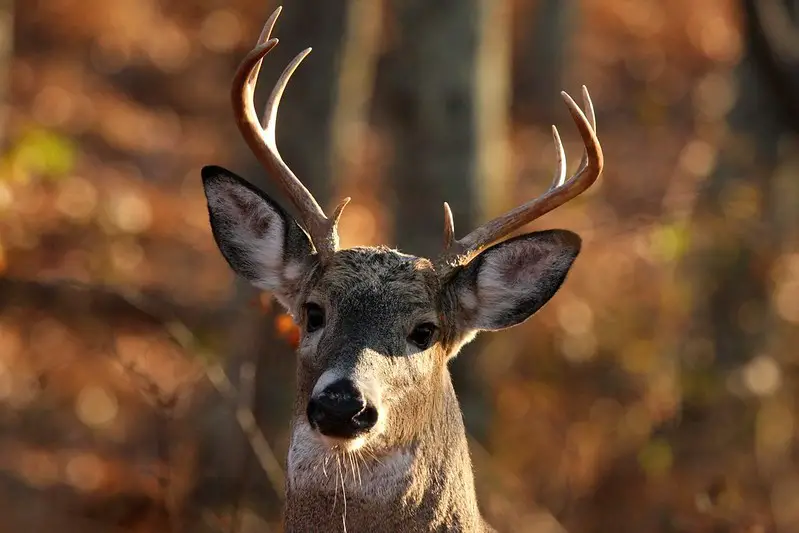
Deer hunting: The lethal skill of stealth.
Stealth kills more deer daily than 30-30’s and 18-wheelers combined. Deer hunting demands it as a skill and an action.
All deer hunters know the importance of stealth. Deer hunters spend a lot of money on camouflage clothing, cover scents (read this first), quiet stalking boots, and hunting blinds. Then we watch a guy dressed in a Santa Suit or smoking a cigarette harvest a trophy buck. What gives?
The truth is stealth, as both deer hunting skill and action, is all about knowing the range and power of a deer’s senses. And then taking advantage of a deer’s lapse in vigilance.
The man in the Santa suit and the deer-hunting smoker remain motionless in tree stands. The deer they take never caught their scent nor heard or saw them move.
So, you can purchase stealthiness, just buy a tree stand. But, you also have to buy more clothing to ward off the cold and an app or two to play with to stave off the boredom. If that’s not your idea of deer hunting, then read on.
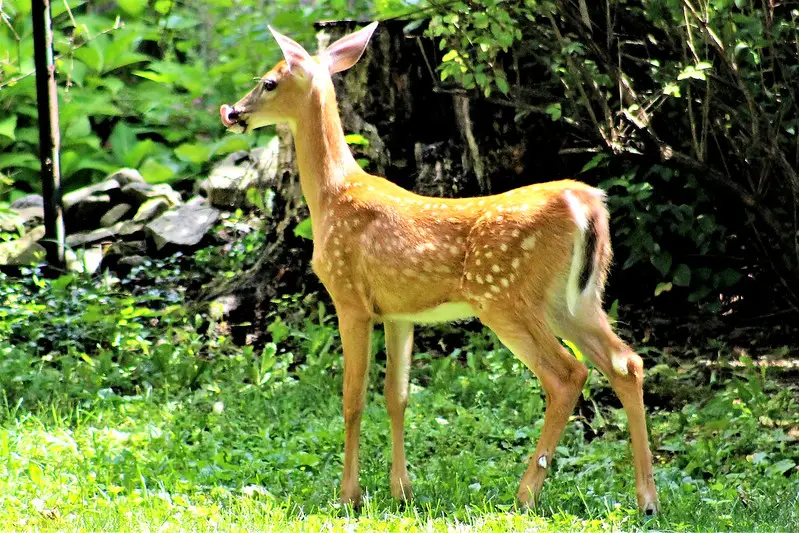
Deer don’t always pay attention.
An awake deer is a busy deer but isn’t always on alert. It must, at least temporarily, dedicate some of its senses to other tasks like finding food or a mate. This creates gaps in a deer’s vigilance. The two most frequently exploited gaps deer hunters use are changing their position when a deer dips its head down to eat and the lust-inspired inattentiveness of a buck in rut.
Other factors also determine the current state of mindfulness of a deer. A deer hunter can quickly adjust their approach tactics once they know how vigilant the type of deer they are hunting is likely to be.
For instance, younger deer are less vigilant than older deer. Fawns spend the least amount of time looking for dangers. Males with spike or antler buds are less observant than males with two or more antlers.
Individual deer are more cautious than deer in a group. And, finally, all deer become warier the farther they are from suitable cover.
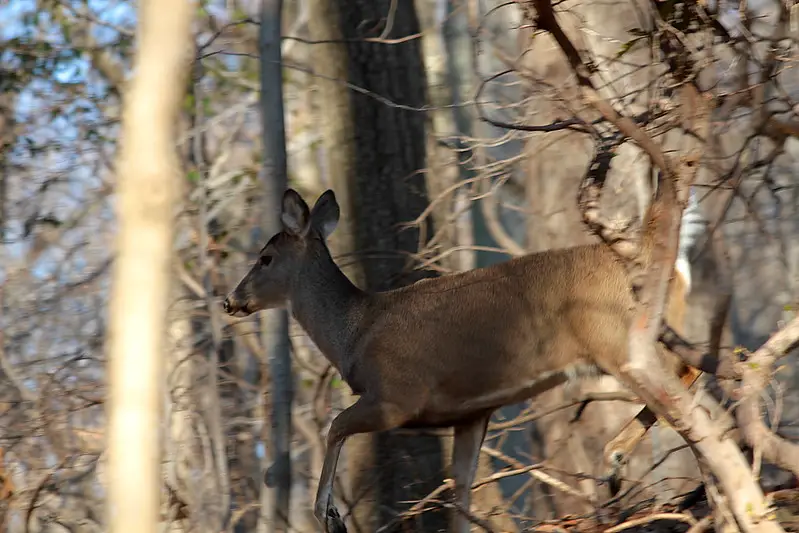
How deer see color and movement.
Deer have excellent both during the day and at night. During the day, they can see colors we hunters would call blue to yellowish green. Yes, your hunter-orange jacket is visible to a deer, but it won’t draw their attention if it isn’t bright fluorescent orange.
To ensure you get the proper hunter-orange clothing, select only natural, soft fabrics and avoid synthetics whose hardness creates reflected flashes of sunlight.
And here’s you first clue toward taking advantage of the slight weakness of a deer’s vision. Never hunt while wearing bright or contrasting clothing.
Blaze-orange caps, gloves or clothes made of soft, natural fabrics reflect far less light than those made of nylon, vinyl or cheap plastics. Those “hard,” synthetic fabrics can reflect white flashes of light in the blue-spectrum, which deer easily detect.
Deer are adept at detecting motion. The placement of their eyes provides about 300 degrees of coverage around them, a binocular vision of about 60 degrees to their front, and only leaves a small cone of blindness of 60 degrees to their rear.
What does all this mean? Well, first, a deer doesn’t have to have its head pointing at you to see you. That huge arc of peripheral vision essentially means if you can see a deer’s eyes, it can probably see you. It will definitely see any movement you make.
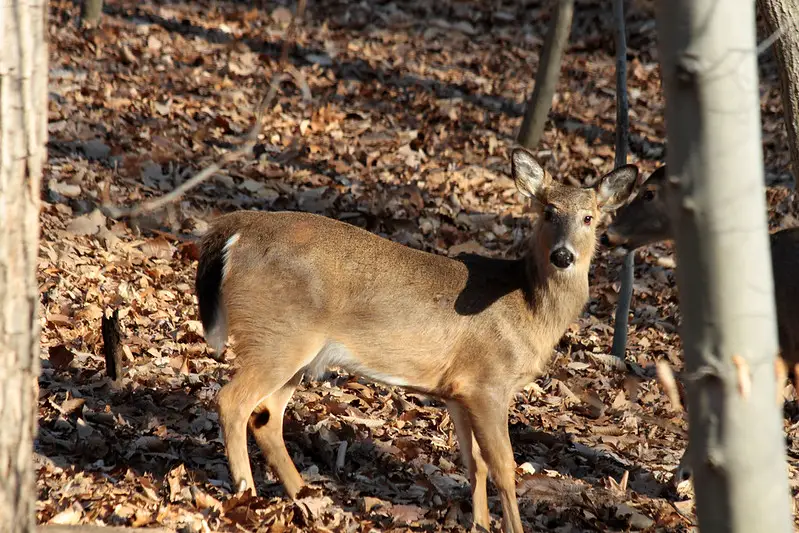
Deer vision vs. human vision.
If you are trying to sneak up on a deer, you should know that with just the slightest turn of its head, you are now within sight. If you freeze quickly enough, you might not be noticed. Why, because deer have 20/100 vision.
What does 20/100 vision mean? Well, if you have 20/20 vision you can read a letter chart at 20 feet away, like the average person. If, however, you have 20/40 vision, you can only read at 20 feet, what the average person can read at 40 feet. Deer then can define a shape 20 feet away, that you could at 100 feet.
That’s the hard way of saying you can see better than a deer. And deer can only focus on an object when both of their eyes can see it, namely when they have their nose pointed directly at it.
If there is an exploitable weakness in deer vision, it’s that wide arc of peripheral vision. Such incredible peripheral sight comes at an expense. In the deer’s case, deer have traded their vertical sight for a horizontal one. That’s why a hunter in a tree stand can often make body position changes without being noticed.
Now, going back to you standing frozen in front of a deer. If the deer starts bobbing its head up and down and moving it from side to side, the deer is trying to get a 3D picture of you. If that picture is sufficiently frightening enough, the deer will snort, flag its tail, and flee.
If it doesn’t, don’t move when the deer first resumes eating out and turns its head away. Deer are crafty, and one of their favorite tricks is the head fake. The instant you begin moving again, that deer snaps its head back in your direction, and you get busted.
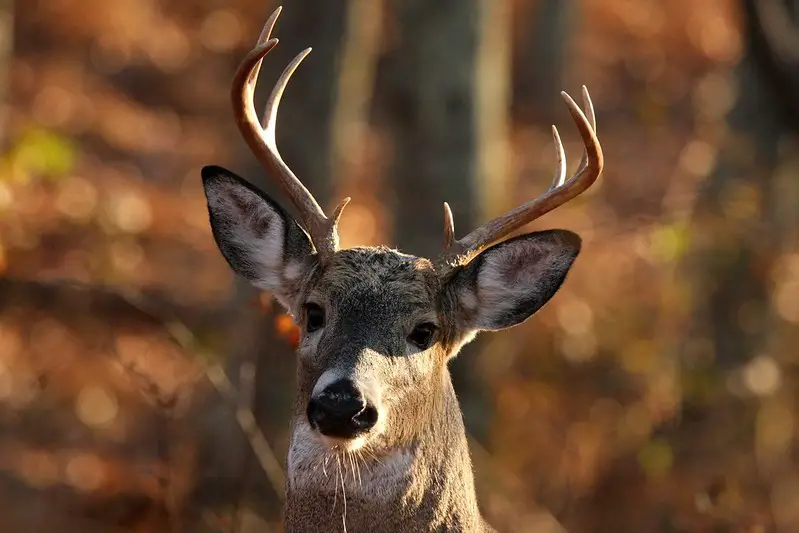
Deer Hunting: Deer well do deer hear?
Deer hunting plays second fiddle to car crashes regarding deer hearing studies. Deer car whistles (read my study here) would be a potential live saver if we ever develop one that works. Nonetheless, many studies and information about how well deer hear and in what ranges have been performed.
Many deer hunters rank a deer’s hearing ability as its third-best defense. However, deer must be downwind for their noses to detect a hazard and move their heads to see what is behind them. Their ears can pick sounds from any direction. And, with a quick swivel of these two large radar dishes, instantly determine the direction a sound came from.
Deer have also naturally habituated all the ever-present and non-threatening sounds heard in the woods and fields. Deer hunters will stop, turn their heads, and look and listen to almost every sound they hear because they aren’t used to being in the woods. Deer don’t focus on the background sounds, so they remain able to detect those sounds that truly matter, like the unnatural rhythm of a human walking on dry leaves.
Deer also associate certain sounds made by other animals as warning alarms. The bark of a red squirrel or the angry call of crows can set a deer on edge for a long time after it has ceased. When a deer hears another animal’s warning calls, its ears pinpoint the direction, and its nose begins sampling the air.
So as you begin your stalk, remember it’s not just the deer’s ears you have to bet; it’s also the senses of the other critters between you and the deer.
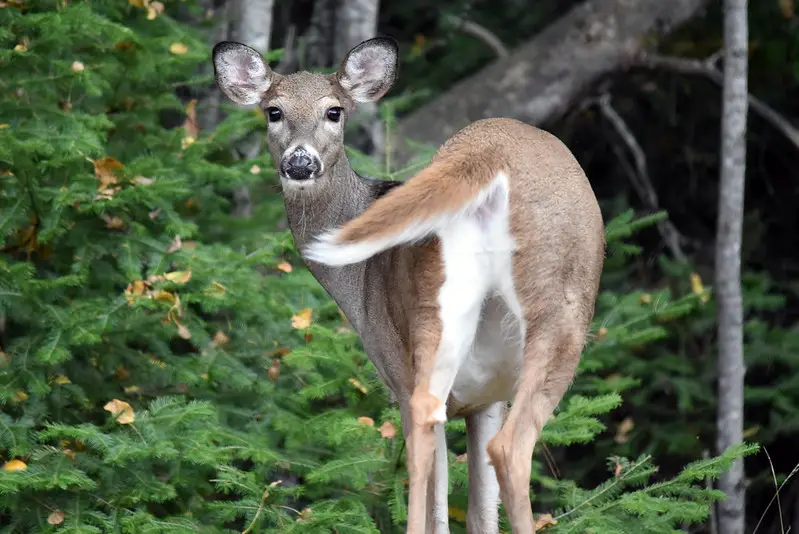
Beating a deer’s ears while deer hunting.
You have two tactics you can use to defeat a deer’s ears while deer hunting, reduce the noise you make or camouflage it.
When walking in the woods, wear soft sole boots and set your foot down on the outer edge first, then roll the rest of your sole down until it contacts the ground. Constantly alter your pace to sound more like a deer or other animal. Speed isn’t your enemy; rhythm is, so don’t march through the woods like a soldier with a slung rifle over their shoulder.
Use wind and rain to dampen the sounds you make. Use a gust of wind to scramble over a pile of broken branches. Hunt those leaf-littered woods during and after the rain.
How to be quiet when hunting deer.
Some other simple tricks for reducing the sound you make while deer hunting include:
- Wearing soft clothing that doesn’t make a sound when rubbed against itself.
- Slowing every move you make by 50%.
- Jump up and down to test for any items clinking into each other.
- Tape up metal surfaces.
- Visually inspect the ground before you step on it.
- After you set up a blind, give it a good shake and listen for any sounds that need to be fixed.
Last, you need to know how to use the sounds you make to lure deer in. You can read my article on how to call deer here. But for now, know these two things:
- Any deer that hears your deer hunting calls will make every effort to approach from downwind.
- Heavy rain and strong winds will reduce the volume of your calls. Be ready to increase their volume.
Now maybe you won’t cringe when the sound of leaves crackling under your boots sounds as loud as thunder in your ears. Yes, deer hundreds of yards away hear it, but if you walk like an animal, the deer won’t be alarmed by it.
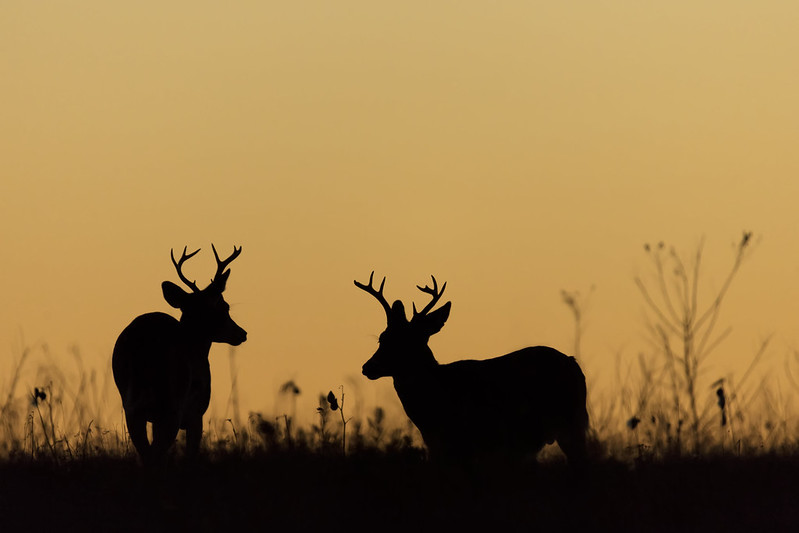
Positive identification: The power of a deer’s nose.
Before we get started (and before you waste a lot of money), please check out my article on Deer scents. Hint: I think its a waste of money.
Now let’s talk about how your scent gets noticed by a deer. Yes, deer can smell your odors as they are carried downwind. Everyone knows that. Most deer hunters don’t know that they also leave their scent on things they brush or rub against, and they shed skin cells with every step they take.
Yep, no matter what you do, you blaze an odorous trail from vehicle to stand. If you could see it, it would look like smears on tree trunks and branches and a snowy carpet of skin on the forest floor.
Believe me; there is little to nothing you can do to avoid leaving this trail. Focus instead on ensuring any deer you are calling or pursuing will never cut across that trail.
A deer can smell you deer hunting almost a mile away.
There really is no way to defeat a deer’s nose when you are deer hunting. Your only hope is to prevent your scent from coming into contact with it.
You must ”play the wind.” Playing the wind means watching and calling for deer in the direction the wind comes from and admitting to yourself that everything behind you has already fled.
Playing the wind begins by knowing where the prevailing winds are coming from and using this knowledge to select a stand location and/or access point that will keep your scent from blowing ahead of you.
For example, when trying to find an entry to point to the land, you will hunt. Start by mapping out the route you will take to reach your stand while still hunting. Then use the prevailing winds to identify where it is safe to park, dismount, and enter the land, leaving your scent behind you.
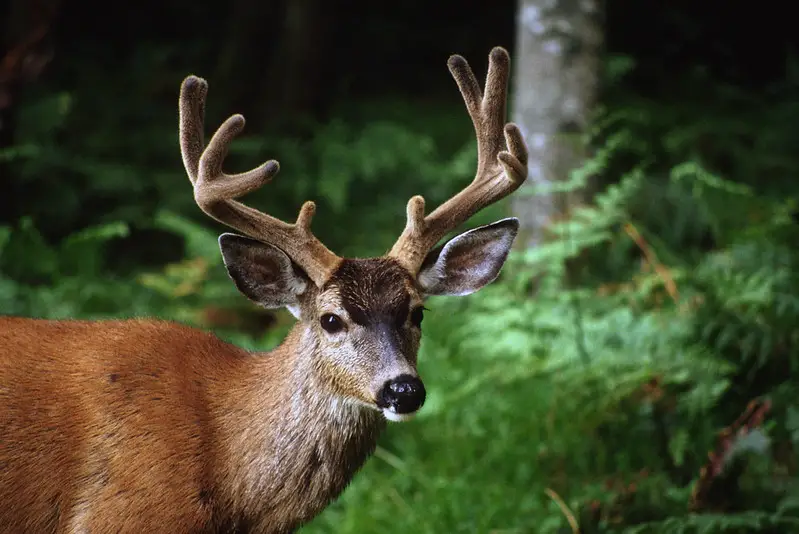
How wind speed affects the scent you leave behind.
A dead calm wind won’t carry your scent as far as a stronger one. However, if you are hunting in low lying area or hollow, your bouquet will float around you like a pond. A few changes in direction (the winds are constantly swirling and never just coming from one direction all the time), and that pond will be spread out all around you.
A strong wind will dissipate your scent and carry it further downwind of you. Now, even if it does swirl around a bit, the stronger winds won’t let it travel far ahead of you. So, strong winds help maintain an odor-free, dead space directly upwind of you.
Deer hunting tips to use when the winds are not in your favor.
You can’t always go deer hunting during the most favorable conditions (see my articles on hunting deer in the rain and hunting deer in the wind). When the wind blows the wrong way, you must use some tricks to keep your scent out of the deer’s nose.
Keep your scent above the deer. Again, the benefits of using a tree stand when deer hunting are undeniable. You can also hunt from a hill above area you expect to find deer. Either way, use height to blow your scent well above any deer downwind of you.
You can also try and cover your own odor with a food based scent(read my article on how to use deer bait) or even skunk essence.
When you use a cover scents like Tink’s Acorn Spray the idea is to flood the deer’s nose with a lovely scent that buys you time. Buys time because your stink is still noticeable, but the deer’s attention to it is distracted.
Cover scents are to deer hunting what a magician’s hand movements are to a magic trick, a time-buying diversion—hopefully, just enough time to squeeze the trigger or finger the release.
I did mention skunk, didn’t I? Well, my best advice is don’t put it on you or your gear. Spray it around your blind, put it in a baggie, and hope nothing leaks on the way home. Sure, skunk essence works; deer even seem to like it. But use it sparingly, or your clothes will soak up the smell, and your stand might be an unbearable place to sit for very long.
You can beat a deer senses when deer hunting!
While every sense a deer has is designed to avoid predators, you now know that they can be defeated and how to defeat them. Good luck this deer hunting season!

